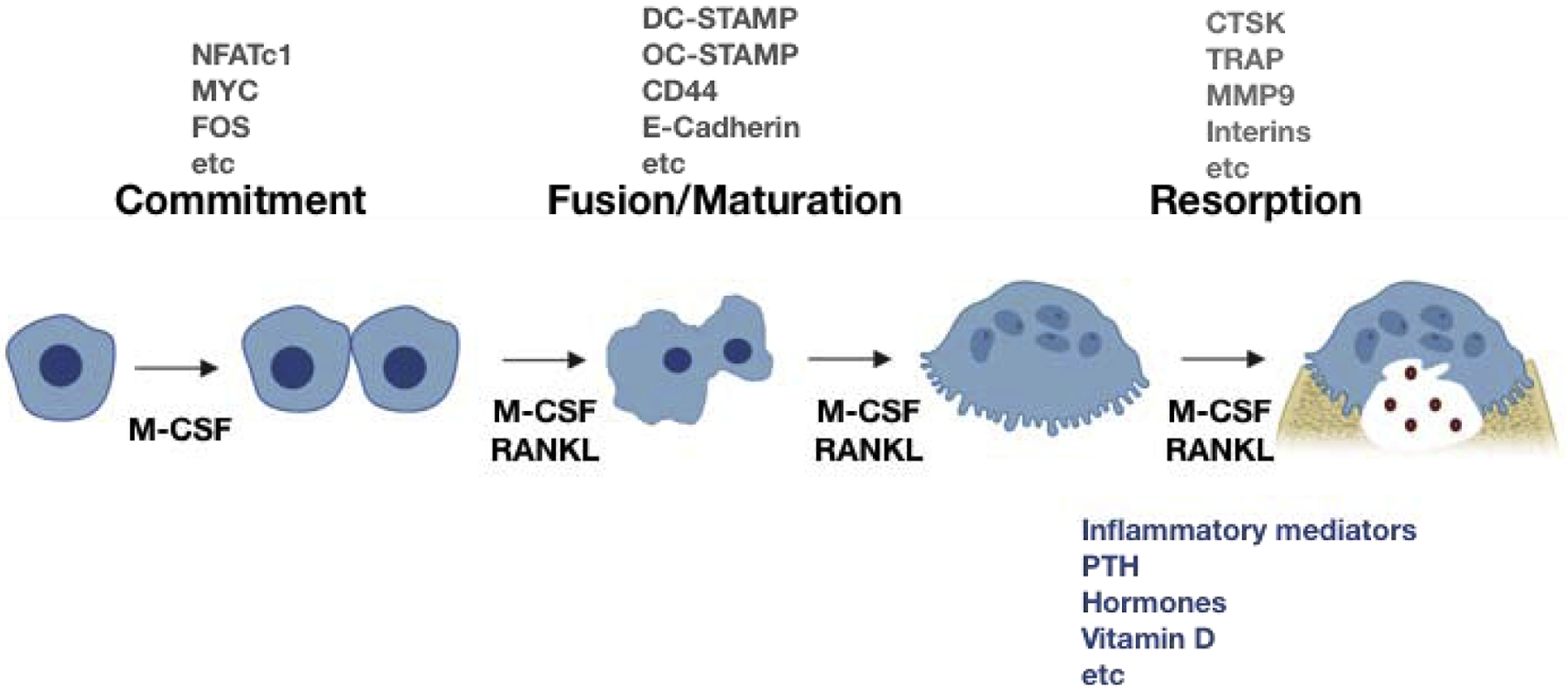Figure 3. Osteoclastogenesis.

Osteoclastogenesis progresses in three different phases; commitment, fusion/maturation, and resorption. Osteoclasts differentiate from multipotential, myeloid lineage precursor cells under the influence of a variety of cytokines and local factors. M-CSF and RANKL are essential factors for osteoclastogenesis and induce various transcription osteoclasts. Cell-cell adhesion is initiated by E-cadherin, integrins, and cytoskeletal rearrangement, resulting in the podosome formation. Subsequently, cell-cell fusion is mediated by induction of fusion related genes such a DC-STAMP and OC-STAMP. Osteoclasts tightly attach to bone via the sealing zone and form the resorption pit. To break bone, osteoclasts resorb bone by releasing several enzymes, including CTSK, TRAP, and MMP9 and ions such as H+ and Cl−. The microenvironment surrounding osteoclasts such as inflammatory mediators, PTH, hormones, vitamin D greatly affects osteoclast differentiation and function.
